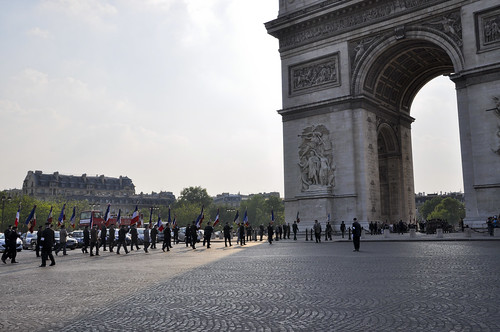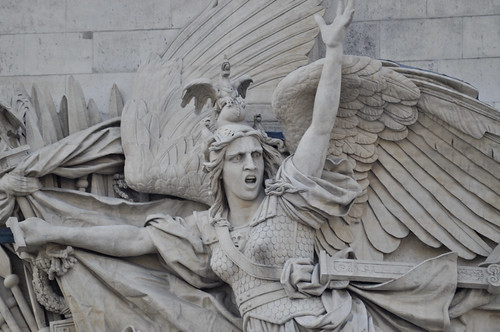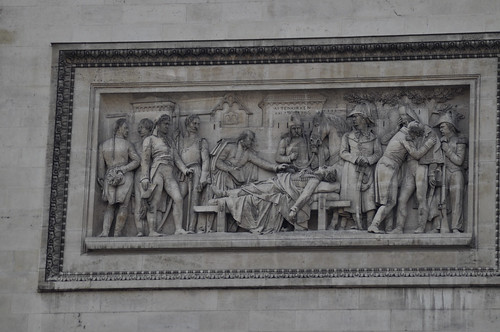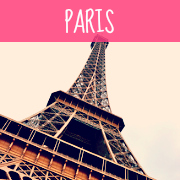
Ao percorrer os Champs-Élysées começámos a ver um aparato de gente e polícia que nos pareceu fora do normal. Sim, estávamos perto do Arco do Triunfo mas que estaria para acontecer para causar tamanho burburinho?
Fomos na Páscoa (25 de Abril) e este tipo de cerimónia segundo tinha lido nos guias acontecia a 8 de Maio, data em que se celebra a vitória na II Guerra Mundial, o ritual é muito parecido há uma marcha lenta de militares liderada por veteranos de guerra que levam uma coroa de flores e colocam na campa do Soldado Desconhecido.
When walking through the Champs-Élysées we started to see a crowd of people and police that seemed out of the ordinary. Yes, we were near the Arc de Triomphe but what was going to cause a buzz that size?
We went in Easter (April 25) and such ceremony according to what I read in guidebooks happened on May 8, when they celebrate the victory in World War II, the ritual is very similar there is an idle led by war veteran taking a wreath to put on the grave of the Unknown Soldier.
We went in Easter (April 25) and such ceremony according to what I read in guidebooks happened on May 8, when they celebrate the victory in World War II, the ritual is very similar there is an idle led by war veteran taking a wreath to put on the grave of the Unknown Soldier.

Ainda assim tivémos a sorte (e o azar) de apanhar este evento, mas por outro lado isto significava que a Praça Charles de Gaulle estava cortada ao trânsito tanto de carros como peões e que não podíamos visitar o Arco. De qualquer forma pudémos ver alguns dos detalhes (com a ajuda de uma tele-objectiva) de um dos símbolos da cidade de Paris.
A sua construção começa no século XIX quando Napoleão decide construir um arco que comemorasse as suas vitórias imperiais, ficou incompleto quando essas mesmas começaram a escassear. Em 1836, a obra termina e é inaugurada no reinado de Luis Filipe I.
O Arco tem quatro esculturas principais, duas de cada lado, nós de onde estávamos só conseguíamos ver duas, esta da Marselhesa e o Triunfo. Por cima estão mais duas esculturas, uma das que podíamos ver representava o funeral do General Marceau e a outra a Batalha de Abukir onde podemos ver Napoleão.
Still we had the good fortune (and misfortune) to catch this event, but on the other hand this meant that the Place Charles de Gaulle was cut off to traffic both pedestrians and cars so we could not visit the Arch. Anyhow we were able to see some of the details (with the aid of a bigger lens) of one of the symbols of Paris.
Its construction began in the nineteenth century when Napoleon decides to build an arch that commemorates their imperial victories, it remained incomplete when those were reduced. In 1836, the work ends and opens during the reign of Louis Philippe I.
The Arc has four major sculptures, two on each side of from where we were we saw only two, the Marseillaise and the Triumph. Above there are two more sculptures, one represents the funeral of General Marceau and the other Battle of Abukir where we can see Napoleon.
Its construction began in the nineteenth century when Napoleon decides to build an arch that commemorates their imperial victories, it remained incomplete when those were reduced. In 1836, the work ends and opens during the reign of Louis Philippe I.
The Arc has four major sculptures, two on each side of from where we were we saw only two, the Marseillaise and the Triumph. Above there are two more sculptures, one represents the funeral of General Marceau and the other Battle of Abukir where we can see Napoleon.



Infelizmente não conseguimos ver muito mais deste famoso arco, o ponto do partida de muitas marchas vitoriosas.
Unfortunately we could not see much more of this famous arch, the point of departure of many marches victorious.



Sem comentários:
Enviar um comentário